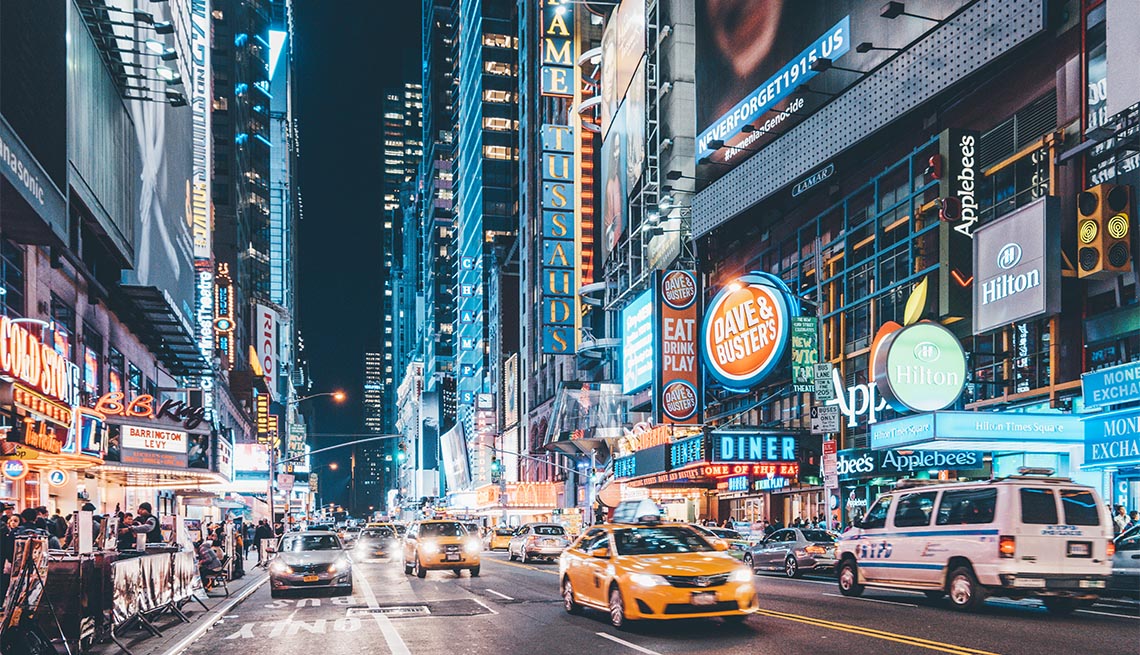Staying Fit
When to go
Manhattan is always bustling, but it’s busiest — no surprise — during the winter holiday season. After all, there’s nothing quite as magical as the Rockefeller Center Christmas tree and festive windows on Fifth Avenue. But winter is cold and often snowy. Bundle up: Those towering skyscrapers can create a vicious wind-tunnel effect, exacerbating the frigid air.
Summer is often hot and sticky with high humidity, from mid-June through September. It can also be on the quieter side, as New Yorkers escape on weekends to flee the heat of the city. But both spring, offering cool breezes and occasional rain, and fall, with its crisp and refreshingly brisk days, can be glorious. May and October are wonderful times to visit.


AARP Membership— $12 for your first year when you sign up for Automatic Renewal
Get instant access to members-only products and hundreds of discounts, a free second membership, and a subscription to AARP the Magazine.
Ways to save: January through March is the quietest time, best for sweet deals on hotels. And if you go in the summer, you can enjoy a free outdoor concert or Shakespeare in the Park.
Where to stay
As befits this city of excess, it has some of the best (and most expensive) lodging in the U.S. — from uptown palaces like the Ritz-Carlton New York, Central Park, to lavish boutique properties like the Gramercy Park Hotel. Happily, with more than 450 hotels, Manhattan has a room for most budgets (though be prepared to spend more than you would in other cities).
New hotels have sprung up in slowly changing neighborhoods, such as Public, hotelier Ian Schrager’s bastion of hipness in the still-gentrifying Lower East Side. But the sweet spot just might be small midtown properties like the Redbury or the Archer Hotel, in freshly renovated older buildings with competitive nightly rates ($206 to $249 in winter).
Ways to save: Home rental services such as HomeAway, VRBO and Airbnb may save you money over a hotel stay. Airbnb dominates in the Big Apple, with more than 38,000 listings — from entire apartments to individual guest rooms — that can often be less expensive than a hotel room of the same size. When choosing a hotel, extend your stay to include a weekend, when business travelers have left town.
How to get there
With three major airports, getting to Gotham is easy. The closest to Midtown Manhattan is the recently renovated LaGuardia Airport (LGA), followed by John F. Kennedy International Airport (JFK) and New Jersey’s Newark Liberty International Airport. The newly opened and glorious Moynihan Train Hall, adjacent to Penn Station, is the Amtrak hub in Manhattan, with easy connections to the subway system.


































































